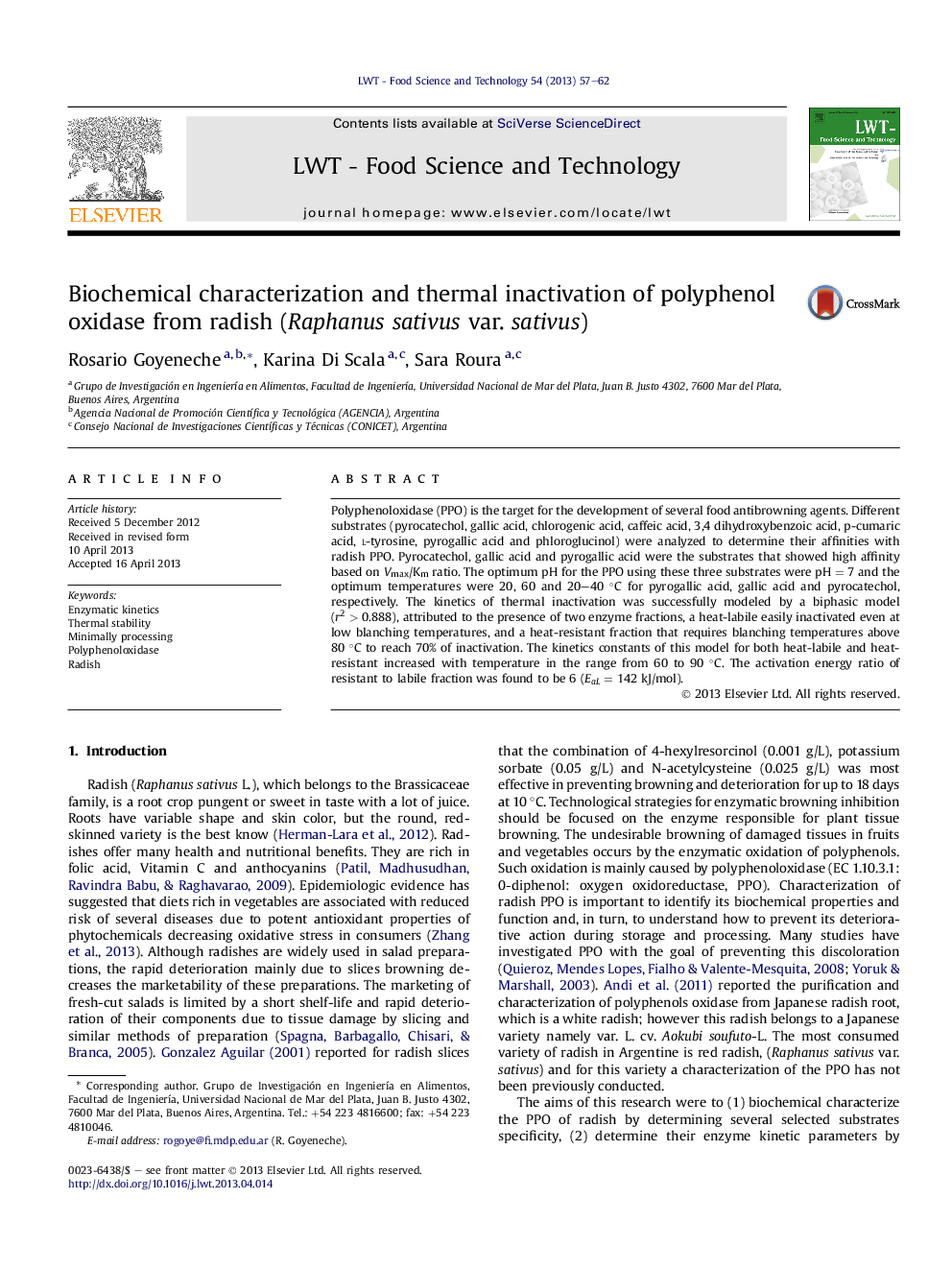| کد مقاله | کد نشریه | سال انتشار | مقاله انگلیسی | نسخه تمام متن |
|---|---|---|---|---|
| 6404164 | 1330900 | 2013 | 6 صفحه PDF | دانلود رایگان |

- Different substrates were analyzed to determine their affinities with radish PPO.
- The optimal pH and temperature for three substrates was studied.
- Blanching at 90 °C/2 min was selected to inactivate more than 90% of initial PPO.
- The kinetics of thermal inactivation was successfully modeled by a biphasic model.
Polyphenoloxidase (PPO) is the target for the development of several food antibrowning agents. Different substrates (pyrocatechol, gallic acid, chlorogenic acid, caffeic acid, 3,4 dihydroxybenzoic acid, p-cumaric acid, l-tyrosine, pyrogallic acid and phloroglucinol) were analyzed to determine their affinities with radish PPO. Pyrocatechol, gallic acid and pyrogallic acid were the substrates that showed high affinity based on Vmax/Km ratio. The optimum pH for the PPO using these three substrates were pH = 7 and the optimum temperatures were 20, 60 and 20-40 °C for pyrogallic acid, gallic acid and pyrocatechol, respectively. The kinetics of thermal inactivation was successfully modeled by a biphasic model (r2 > 0.888), attributed to the presence of two enzyme fractions, a heat-labile easily inactivated even at low blanching temperatures, and a heat-resistant fraction that requires blanching temperatures above 80 °C to reach 70% of inactivation. The kinetics constants of this model for both heat-labile and heat-resistant increased with temperature in the range from 60 to 90 °C. The activation energy ratio of resistant to labile fraction was found to be 6 (EaL = 142 kJ/mol).
Journal: LWT - Food Science and Technology - Volume 54, Issue 1, November 2013, Pages 57-62